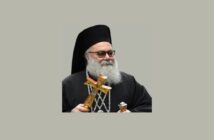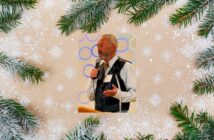Source: Department of Religious Education – Greek Orthodox Archdiocese of America
NATIVITY SERMON SERIES
Apodosis of The Nativity of Our Lord and Savior, Jesus Christ (Leave-Taking of Christmas)
December 31
THE HYMN
Heirmos, 1st Ode, Nativity Matins
Christ is born; glorify Him! Christ is come from heaven; go and meet Him. Christ is on earth; arise to Him. Sing to the Lord, all you who dwell on the earth; and in merry spirits, O you peoples, praise His birth. For He is glorified.
THE SERMON
The Limitless Nature Of A Feast
Our Church, on December 31st, celebrates the apodosis (or leave-taking) of the Feast of the Nativity of Christ. The apodosis represents the final day that a feast is celebrated. The great feasts of our Church are usually extended for eight days, depending on the significance and timing of the next feast in the Church calendar. For instance, the Nativity Feast celebrations extend for seven days, while the Feast of Pascha continues for a full forty days. But where does the idea of the apodosis come from? It actually developed from the tradition of the Old Testament. Mosaic Law explicitly prescribed that the great Jewish feasts go on for eight days.
The custom of leave-taking was received in Christian worship. All feasts connected to our salvation are extended in an unbounded (timeless) way into the future. The feasts reach towards what we refer to in theology as the eschaton (in Greek, έσχατον, meaning last), which is the final age beyond history (the time proceeding the Second Coming of Christ). The limitless nature of a feast is meant to transcend historical and liturgical time, thus incorporating a foretaste of eternal life. For the Church, which is the Body of the Incarnate God, there is no material difference between a feast and the underlying events
that the Church celebrates during a feast. An event taking place at a given historical moment according to God’s plan for the salvation of the world is considered as occurring in such a way and with such purpose that it continues to endure perpetually. The historical event is converted into a liturgical and soteriological event (related to our salvation), which forever extends into the future, all through the historical course of the Church on earth, until the Second Coming of Christ, and all the way to eternity.
All Church services are patterned along these lines, where the spiritual meaning of feasts is systematically conveyed and expressed through magnificent hymns. The hymns poetically articulate the dogmatic truth of our faith, radiating the lived experience of the Church and its members through time. By offering up copious amounts of faith and hope, the hymnological tradition of the Church helps us remain on the right path in our journey toward the Lord of Glory.
The hymns concerning the Nativity are very much related to how God as a human person, carries out the plan of our salvation. The verse from the first ode of the Christmas canon, a poem by the hymnographer Kosmas of Maiouma, is a remarkable example. The whole canon is a poetic rendition of a sermon by Saint Gregory the Theologian for Christmas. In the case of the more affirmative part of every sentence (“Christ is born;” “Christ is come from heaven;” “Christ is on earth”), a separate call to action is attached (“glorify Him;” “go and meet Him;” “arise to Him”). With three different sets of verbs, the hymnwriter leads us to three distinct spiritual levels, starting with the doxology (“glorify Him”), moving on to the encounter (“go and meet Him”), and concluding with the exaltation (“arise to Him”). Our overall response to the Nativity is premised on who Christ Is and what He came to do, as mentioned in the Stichera of the Vespers of the Nativity hymn: “the exact Image of the Father, the express Image of his eternity, takes the form of a servant, coming forth from a virgin Mother; and He undergoes no change.”
As we take leave of the Nativity Feast today, let us give ourselves over the poetic nature of the hymns and improve our understanding of what the God-Man’s presence on earth means for us and our salvation. The Most Holy Nativity of our Lord Jesus Christ inaugurates a clear path to the eternal and incorruptible Kingdom of the Lord. The time has come. The promise has been fulfilled. The hope of a great dominion of love within humanity is real.




